#alfonso d'este
Photo






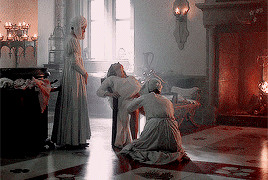
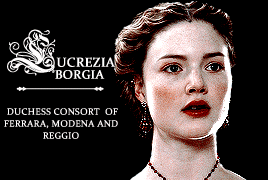
→ history + alfonso d’este and lucrezia borgia
requested by noesapphic
Although Ercole reported happily to the Pope that Alfonso and Lucrezia 'gave each other pleasure’, that did not mean they loved each other. It was a marriage of state, eagerly entered into by the one, reluctantly by the other. Lucrezia was not attracted by Alfonso’s rough ways and manners and reserved character, but she had achieved her ambition and she was determined to make a sucess of her career as Duchess of Ferrara. — Sarah Bradford, Lucrezia Borgia: Life, Love and Death in Renaissance Italy
#historyedit#alfonso d'este#lucrezia borgia#15th century#16th century#early modern history#borgiaedit#italian history#*history#*mine#*requests#*historical couples#noesapphic#i hope you like it!
275 notes
·
View notes
Text
1519-Lucrezia Borgia

Lucrezia Borgia (Italian pronunciation: [luˈkrɛttsja ˈbɔrdʒa]; Valencian: Lucrècia Borja[luˈkrɛsia ˈbɔɾdʒa]; 18 April 1480 – 24 June 1519) was an Italian noblewoman of the House of Borgia who was the daughter of Pope Alexander VI and Vannozza dei Cattanei.
#Jun.24.1519#date of death#Lucrezia Borgia#Italian wife of Alfonso I d'Este#Duke of Ferrara#history today
2 notes
·
View notes
Text
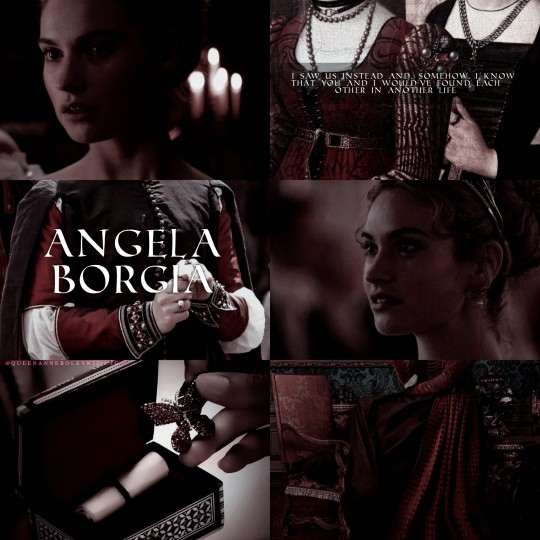
Two or three of her ladies-in-waiting were pretty. One danced well and another, Lucrezia’s cousin Angela Borgia, was charming. Without her knowing, El Prete had picked her as his favorite. Angela’s charm would be the source of great tragedy in Ferrara; even then it must have been one of the reasons for the nightly visits Alfonso’s brothers made to Lucrezia’s palace.
She was the illegitimate daughter of Guillem Ramon de Borja and Sanoguera, son of Otic de Borja y Montcada and his wife Violant Sanoguera. Her mother was Isabel de Montcada. She was also a niece of Cardinal Rodrigo Borgia, later Pope Alexander VI .In her youth she lived in Rome alongside her cousin Lucretia Borgia, whom she accompanied to Ferrara when she married Alfonso I d'Este, Duke of Ferrara
Considered as a woman of great beauty, elegance, romantic, with an exquisitely feminine personality. She was absolutely trustworthy friend, confidant of the innermost secrets, favorite companion and assistant to her favorite cousin Lucretia. She won the praise of men of letters as Diomede Guidalotti who dedicated two sonnets to her, and even Ludovico Ariosto dedicated the last canto of Orlando Furioso to her. Pietro Bembo idealized her as an "angel that can pray for me." On 1 August 1504, in the dedication of his "Gli asolani" to the duchess Lucrezia Borgia refers back to his Angela, indicating that Lucrezia's cousin and maiden is "the dear and gallant Madonna Angela Borgia".
#perioddramaedit#history#angela borgia#angela borja#borgia#cortegiania#lucrezia borgia#the borgias#lily james#donne della storia#donne nella storia#donneitaliane#donne italiane#women of history#renaissance women#italian renaissance#women of renaissance#renaissance italy#renaissance#rinascimento#lilyjamesedit#otoc de borja#cesare borgia#rodrigo borgia#isabel de montcada#giulio d'este#ippolito d'este#ferrara#women in history#pietro bembo
70 notes
·
View notes
Text
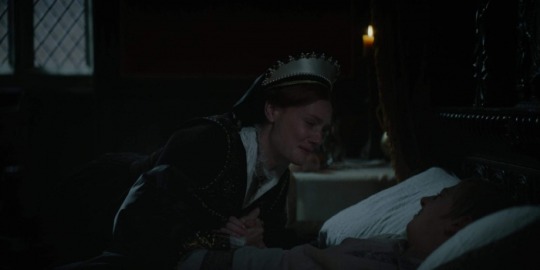
Mary I's Fight For The Throne
10th February 1553 - Mary and King Edward meet
On the 10th February 1553 Mary rides from her townhouse of Saint John's in Clerkenwell down Fleet Street to see her brother King Edward VI in Westminster. She had arrived in London on the 6th, but that night Edward was "attacked by a fever caused by a chill he had caught". 1 Her visit was therefore delayed three days to allow him time to recover.
She is accompanied to court by "a great number of lords and knights", the "duchess of Suffolk and Northumberland [...] and many more ladies and gentlewomen." 2 She is met at the outer gate by John Dudley, the Duke of Northumberland, Henry Grey, the Duke of Suffolk, and many more earls, knights and gentlemen, who do "duty and obeisance to her as if she had been Queen of England." 3
After dismounting, she is led up into the chamber of presence, and into the King's bedchamber, where the King "met her and saluted her." 4 Edward "received her very kindly and graciously, and entertained her with small talk, making no mention of matters of religion." 5
After talking, she leaves "accompanied by several gentlemen and ladies, and notably by the Duchesses of Suffolk and Northumberland." 6
While in London, she meets the Imperial ambassador, Jehan Scheyfve, who informs her of a rumour about the Privy Council betrothing her to Alfonso d'Este, eldest son of the Duke of Ferrara. Mary shows "great astonishment and declared it seemed very strange to her that anyone should have concerned himself with her, especially on such a business, because she had so little inclination to marriage." 7
Sources:
1. Spanish State Papers, 17th February 1553
2. Diary of Henry Machyn, February 1553
3. Spanish State Papers, 17th February 1553
4. Diary of Henry Machyn, February 1553
5. Spanish State Papers, 17th February 1553
6. Spanish State Papers, 17th February 1553
7. Spanish State Papers, 17th February 1553
19 notes
·
View notes
Text
Lucrezia Borgia, donna tra le più note e controverse di ogni epoca, nacque il 18 aprile 1480. Lei era figlia illegittima di un papa, per l'esattezza Alessandro VI, il cui vero nome era Rodrigo Borgia. Si sposò tre volte: la prima a 13 anni e la seconda a 18, dopo l'annullamento del primo matrimonio. Il secondo marito di Lucrezia fu Alfonso d'Aragona, il quale fu fatto uccidere, qualche tempo dopo le nozze, dal fratello Cesare, di cui vi ho parlato di recente. Il terzo marito fu Alfonso d'Este, duca di Ferrara. Lucrezia visse 17 anni nella città del marito, a partire dal 1502, e lì fu amata dai sudditi e circondata dai poeti di corte, tra cui Pietro Bembo, il dotto umanista, innamoratissimo di lei. Bembo aveva sentito parlare di questa donna aristocratica, intelligente, affascinante e simpatica, ma appena la vide, rimase folgorato dalla sua bellezza e dai suoi lunghi capelli biondi. Egli le dedicò l'opera "Gli asolani" e da allora, i due furono legati da un sentimento clandestino. La peste li separò, ma essi si scrissero intense epistole per ben 16 anni, tra le più belle lettere d'amore ancora conservate. Insieme ad esse, Lucrezia inviò una sua ciocca bionda, affinché lui potesse continuare ad accarezzarla. Lucrezia morì a 39 anni, dopo aver dato alla luce l'ultima figlia, e fu sepolta nel monastero del Corpus Domini, a Ferrara, dove tuttora riposa. Lucrezia Borgia ebbe fama di essere molto bella, ma dai facili costumi e spietata come il fratello. Infatti, passò alla storia come mangiatrice di uomini e avvelenatrice, per l' uso di un veleno micidiale, chiamato cantarella, con il quale lei e la famiglia Borgia avrebbero eliminato i propri nemici, versandolo nelle bevande o nel cibo altrui. Oggi sappiamo che tutto ciò è, probabilmente, frutto di calunnie e di immaginazione popolare, ma anche grazie ad esse la Borgia si è guadagnata l'immortalità nell'immaginario comune.
Sotto, Lucrezia Borgia vista da Milo Manara.
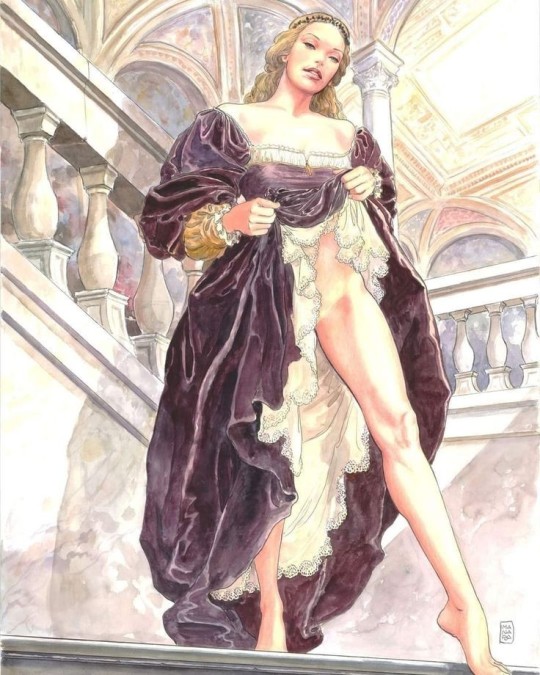
18 notes
·
View notes
Text


OTD in Music History: Composer, conductor, and piano / organ virtuoso Felix Mendelssohn (1809 - 1847) is born in Germany.
Nothing short of a living legend in his own time, Mendelssohn still remains one of the most popular and frequently performed composers of the early Romantic period.
Mendelssohn's considerable compositional output encompass symphonies, concertos, piano music, organ music, art songs, and chamber music. His best-known individual works include the "String Octet" (1825 -- written when he was just 16!) the "Overture To A Midsummer Night's Dream" (1826 -- written when he was just 17!), the "Italian" (1834) and "Scottish" (1842) Symphonies, the "St. Paul" (1836) and "Elijah" (1846) Oratorios, and his 1st Piano Trio (1839) and Violin Concerto (1844). Mendelssohn's collections of "Songs Without Words" are probably his most famous solo piano compositions; he also penned the melody for the ever-popular Christmas carol, "Hark! The Herald Angels Sing!"
Mendelssohn was also hailed for helping to spark revived interest among the concert-going public in the music of Johann Sebastian Bach (1685 - 1750), through his landmark 1829 performance of (a highly-edited and thoroughly rescored version of) the St Matthew Passion. One of the greatest and most influential conductors of the early 19th Century, Mendelssohn’s ten visits to Britain – during which he oversaw the premiere of many of his most important works – exerted a profound and lasting impact on the musical culture of that country.
PICTURED: An 1844 autograph letter written and signed by Mendelssohn -- in surprisingly good English! -- to a female admirer, regarding various musical and social matters. Most notably, Mendelssohn describes celebrated Italian bass Luciani Mariani (1801 - 1859) as "his favorite singer.” Mariani created a number of important opera roles, including Oroe in Giacomo Rossini's (1792 – 1868) "Semiramide" (1823), Rodolfo in Vincenzo Bellini's (1801 – 1835) "La sonnambula" (1831), and Alfonso d'Este in Gaetano Donizetti's (1797 – 1848) "Lucrezia Borgia" (1833).
#Composer#conductor#piano#organ#virtuoso#Felix Mendelssohn#Mendelssohn#Felix Mendelssohn - Bartholdy#opera#classical music#bel canto#music history#Romantic period#A Midsummer Night's Dream#Overture
20 notes
·
View notes
Text

Titulo completo: Baco y Ariadna
Artista: Tiziano
Fechas de artistas, activo alrededor de 1506; murió 1576
Fecha de realización, 1520-3
Medio y soporte, Óleo sobre lienzo
Dimensiones, 176,5 × 191 cm
Resumen de inscripción, firmado
crédito de adquisición, Comprado, 1826
Una de las pinturas más famosas de la Galería Nacional, Baco y Ariadna de Tiziano, ilustra una historia contada por los autores clásicos Ovidio y Catulo. La princesa cretense Ariadna ha sido abandonada en la isla griega de Naxos por Teseo, cuyo barco se aleja en la distancia. Baco, dios del vino, se enamora a primera vista de Ariadna y salta de su carro hacia ella. Más tarde, Bacchus lanza la corona de Ariadne al aire, inmortalizándola como la constelación Corona Borealis, representada por las estrellas sobre su cabeza.
Esta pintura forma parte de una célebre serie de Giovanni Bellini, Tiziano y el artista ferrarense Dosso Dossi, encargada para el Camerino d'Alabastro (Sala de Alabastro) en el Palacio Ducal de Ferrara, por Alfonso I d'Este, duque de Ferrara. Todas las imágenes, completadas entre 1514 y 1525, son bacanales: escenas de hedonismo, bebida, música y amor. Tiziano hace gala de su gran habilidad como colorista, combinando en este único cuadro todos los pigmentos más puros y vibrantes disponibles en ese momento.
Información e imagen de la web de la National Gallery de Londres.
3 notes
·
View notes
Photo

TORQUATO TASSO, IL MASSIMO POETA DELLA SECONDA METÀ DEL SEICENTO. ALFONSO II D'ESTE. RITRATTO DA HANS VON AACHEN. https://www.instagram.com/p/ChFJgPqKmyt/?igshid=NGJjMDIxMWI=
4 notes
·
View notes
Text
Events 4.11 (before 1970)
491 – Flavius Anastasius becomes Byzantine emperor, with the name of Anastasius I.
1241 – Batu Khan defeats Béla IV of Hungary at the Battle of Mohi.
1512 – War of the League of Cambrai: Franco-Ferrarese forces led by Gaston de Foix and Alfonso I d'Este win the Battle of Ravenna against the Papal-Spanish forces.
1544 – Italian War of 1542–46: A French army defeats Habsburg forces at the Battle of Ceresole, but fails to exploit its victory.
1689 – William III and Mary II are crowned as joint sovereigns of Great Britain on the same day that the Scottish Parliament concurs with the English decision of 12 February.
1713 – France and Great Britain sign the Treaty of Utrecht, bringing an end to the War of the Spanish Succession (Queen Anne's War). Britain accepts Philip V as King of Spain, while Philip renounces any claim to the French throne.
1727 – Premiere of Johann Sebastian Bach's St Matthew Passion BWV 244b at St. Thomas Church in Leipzig, Electorate of Saxony (now Germany).
1809 – Battle of the Basque Roads: Admiral Lord Gambier fails to support Captain Lord Cochrane, leading to an incomplete British victory over the French fleet.
1814 – The Treaty of Fontainebleau ends the War of the Sixth Coalition against Napoleon Bonaparte, and forces him to abdicate unconditionally for the first time.
1856 – Second Battle of Rivas: Juan Santamaría burns down the hostel where William Walker's filibusters are holed up.
1868 – Former shōgun Tokugawa Yoshinobu surrenders Edo Castle to Imperial forces, marking the end of the Tokugawa shogunate.
1876 – The Benevolent and Protective Order of Elks is organized.
1881 – Spelman College is founded in Atlanta, Georgia as the Atlanta Baptist Female Seminary, an institute of higher education for African-American women.
1908 – SMS Blücher, the last armored cruiser to be built by the Imperial German Navy, is launched.
1909 – The city of Tel Aviv is founded.
1921 – Emir Abdullah establishes the first centralised government in the newly created British protectorate of Transjordan.
1935 – Stresa Front: opening of the conference between the British Prime Minister Ramsay MacDonald, the Italian Prime Minister Benito Mussolini and the French Minister for Foreign Affairs Pierre Laval to condemn the German violations of the Treaty of Versailles.
1945 – World War II: American forces liberate the Buchenwald concentration camp.
1951 – Korean War: President Truman relieves Douglas MacArthur of the command of American forces in Korea and Japan.
1951 – The Stone of Scone, the stone upon which Scottish monarchs were traditionally crowned, is found on the site of the altar of Arbroath Abbey. It had been taken by Scottish nationalist students from its place in Westminster Abbey.
1952 – Bolivian National Revolution: Rebels take over Palacio Quemado.
1952 – Pan Am Flight 526A ditches near San Juan-Isla Grande Airport in San Juan, Puerto Rico, after experiencing an engine failure, killing 52 people.
1955 – The Air India Kashmir Princess is bombed and crashes in a failed assassination attempt on Zhou Enlai by the Kuomintang.
1957 – United Kingdom agrees to Singaporean self-rule.
1961 – The trial of Adolf Eichmann begins in Jerusalem.
1963 – Pope John XXIII issues Pacem in terris, the first encyclical addressed to all Christians instead of only Catholics, and which described the conditions for world peace in human terms.
1964 – Brazilian Marshal Humberto de Alencar Castelo Branco is elected president by the National Congress.
1965 – The Palm Sunday tornado outbreak of 1965: Fifty-five tornadoes hit in six Midwestern states of the United States, killing 266 people.
1968 – US President Lyndon B. Johnson signs the Civil Rights Act of 1968, prohibiting discrimination in the sale, rental, and financing of housing.
1968 – A failed assassination attempt on Rudi Dutschke, leader of the German student movement, leaves Dutschke suffering from brain damage.
0 notes
Text
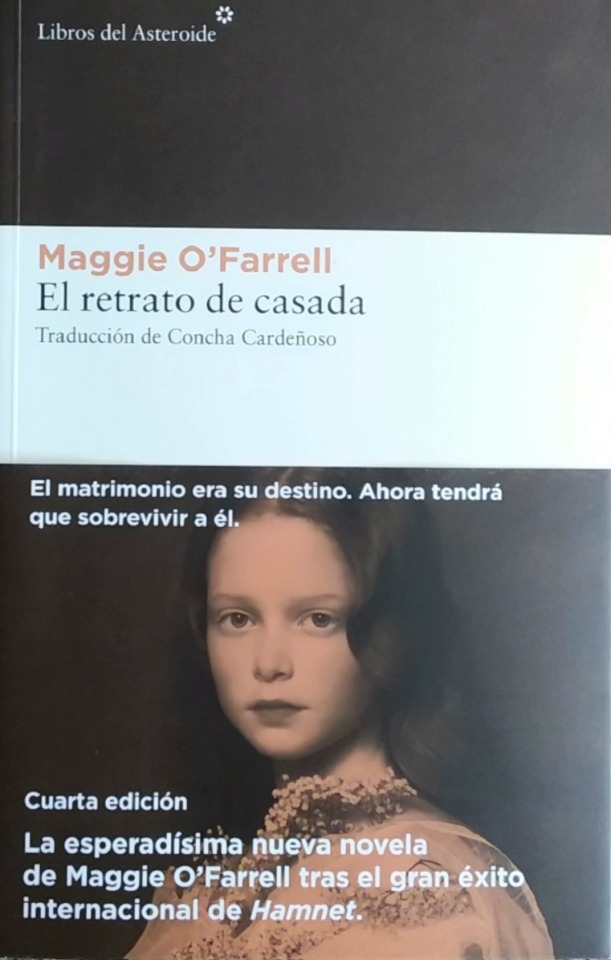
T��tulo: El retrato de casada
Autor: Maggie O'Farrell
Editorial: Libros del asteroide
Una novela histórica que trata de Lucrezia de Medici, su matrimonio con Alfonso d'Este, duque de Ferrara y su muerte poco después, en apenas un año. Me pareció bien escrito, aunque, como era de esperarse quizás, desde una óptica tan femenina que no me convence del todo. Desde luego es un capítulo de la Italia renacentista, íntima y pública, enigmática y déspota que se puede atisbar desde los ojos de una niña de 15 años.
0 notes
Text

Elisabetta Gonzaga was the daughter of the lord of Mantua and her early education led her to a life of companionship with some of the greatest minds of fifteenth-century Italy. She married Guidobaldo da Montefeltro, the duke of Urbino, in 1488, and thereafter her court attracted writers, artists, and scholars. She was also the sister-in-law of Isabella d’Este, the influential Renaissance patron and political figure. Elisabetta Gonzaga was immortalized by the writer Baldassare Castiglione, whose famous work, The Courtier, was based on his interactions and conversations with her.
She married Guidobaldo da Montefeltro, the duke of Urbino, in 1489. Guidobaldo was sickly and impotent, and they had no children, but Elisabetta refused to divorce him and nursed him through his illnesses. After his death, Elisabetta refused to marry.
Her court attracted writers, artists, and scholars. Her nobility gave her contact and involvement in the power politics of 16th century Italy. She was the sister-in-law of Isabella d'Este, an influential Renaissance patron and political figure. Despite having poor health, Elisabetta was known to be a great horsewoman and would frequently attend hunts in the countryside around Urbino.
In 1502 Elisabetta reluctantly accompanied Lucrezia Borgia on her journey to Ferrara, where Lucrezia was married to Alfonso I d'Este. An eyewitness described her at the wedding thus:
"On entering Ferrara she rode a black mule caparisoned in black velvet embroidered with woven gold, and wore a mantle of black velvet strewn with triangles of beaten gold; another day indoors she wore a mantle of brown velvet slashed, and caught up with chains of massive gold; another day a gown of black velvet striped with gold, with a jewelled necklace and diadem; and still another day, a black velvet robe embroidered with ciphers."
#perioddramaedit#history#edit#history edit#elizabeth olsen#elisabetta gonzaga#elizabetta gonzaga#rimini#donne nella storia#donne della storia#donne italiane#donneitaliane#italian renaissance#women of renaissance#renaissance italy#renaissance women#renaissance#rinascimento#mantua#isabella d'este#lucrezia borgia#16th century#baldassare castiglione#guidobaldo Montefeltro#women of history#historical women#strong women#cortegiania#italiansedit#italian history
36 notes
·
View notes
Text
Prince of Foxes (1949).
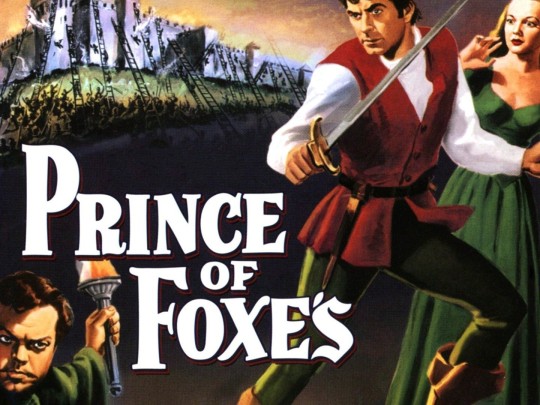
"El príncipe de los zorros" o en su idioma original “Prince of foxes” no sitúa en la Italia del renacimiento a mediados de agosto de 1500, y no abre en un escenario de un velorio, el velorio de Alfonso de Aragón Príncipe de Salerno y esposo de Lucrezia Borgia es aquí donde nos muestran a los personajes principales de la trama, entre ellos al protagonista de la obra Andrea Orsini, un noble y aficionado al arte, el cual igual de habilidoso que es con el pincel lo es con las palabras y lleno de ambiciones, sirve como soldado al maquiavélico príncipe César Borgia el cual en la historia real es hijo del polémico Papa Alejandro VI y por ello ostenta tal poder. Durante esta primera escena vemos el buen trabajo hecho con la escenografía, la arquitectura representada siguiendo los cánones clásicos y tipologías propias de las iglesias del renacimiento sumándole la vestimenta de los actores ayudan a crea una experiencia inmersiva, intente encontrar información sobre el nombre de la misma iglesia, pero difícilmente pude encontrar nada más allá de la mención de que se la cinta se rodó en Italia y los las estructuras vistas en la misma son auténticas.
Dicho lo anterior proseguimos con la narrativa donde en poco tiempo nos muestran el objetivo principal Cesar Borgia donde selecciona a Andrea para llevar a cabo una intriga, esta misión consiste en arreglar el matrimonio de su hermana viuda, Lucrezia y a Alfonso d��Este, hijo del duque Ercole d'Este de Ferrara, dando a entender que la muerte de su cuñado fue ordenada por este mismo para sacarle provecho diplomático. Bajo esta escena nos muestran parte de la actitud del que posteriormente se nos presenta como protagonista de la obra, pero cuyas acciones y forma de pensar ya nos intuía este desenlace, gracias a ello Borgia eliminará a Ferrara como un impedimento para la conquista del centro de Italia y la posterior unificación de la península italiana.
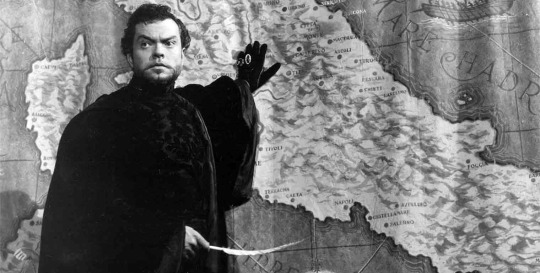
Andrea viaja a Venecia para vender algunos de sus cuadros y así recaudar dinero para los gastos de su misión, cabe resaltar que las imágenes que vemos son la real Venecia, tanto que se aprecia como existen la Campanile de San Marcos, Palacio Ducal de Venecia y el Palazzo della Librería (este último construido de entre 30 a 50 años después de la época donde nos situamos). Allí es donde conoce a otro personaje importante de la trama la cual señorita Camilla di Baglione, joven esposa del anciano conde Marc Antonio Varano de Citta del Monte. Durante su travesía a ferrara se nos muestra parte de la actitud de Andrea, un hombre confiado, carismático y bueno con el uso de las palabras tanto que convence a un asesino de contratarlo a pesar de que el mismo intento asesinarlo, además de mostrar dotes con el manejo de la espada. En ese mismo trayecto se detiene para visitar la granja de la viuda de un herrero. Ella es en realidad su madre, es aquí donde se nos muestra que el protagonista no es en realidad un noble si no un campesino y su nombre real es Andrea Zoppo y no el noble Orsini que pretende ser.
Al finalizar esta misión con éxito, se le encarga otra, esta vez una de asesinato donde su objetivo es la de embajador en la ciudad montañera de Citta del Monte (esta última existiendo solo en el universo de la cinta y cuya ubicación seria la actual San Marino), con órdenes de ayudar a Borgia a conquistar la ciudad en la cima de la montaña antes de la primavera, utilizando una conquista romántica de Camilla para facilitar el asesinato del anciano conde. Durante su estancia ocurren una serie de eventos que cambian la visión del protagonista mientras el amor hacia Camilla no hace más que aumentar y al mismo tiempo se ve cautivado por la sabiduría del hombre mayor y el amor por su pueblo.

El tiempo se agota y es donde llega Don Esteban, capitán de los ejércitos de Borgia para imponer sus condiciones a la ciudad. Es aquí donde Andrea Orsini despeja las dudas que durante meses se han ido acumulando en su cabeza y decide ayudar al Conde ante el ataque de las tropas de Borgia.
Durante un cruento asedio, el cual se sitúa en la actual Monte Titano en San Marino, el conde es herido de muerte en una emboscada, a partir de ahora el protagonista toma la defensa de la ciudad.

Después de tres meses de repeler los ataques, la ciudad se encuentra en sus últimas, aquí Orsini decide entregarse para que aceptar las condiciones de rendición y que la ciudad sobreviva, este es sentenciado a quedar ciego Belli, el asesino que se había vuelto su amigo es quien lo deja ciego con sus propias manos, pero es todo un truco para lograr salvar Andrea y finge la desfiguración, posteriormente juntos planean el rescate de Camila y junto a un levantamiento en la ciudad de Citta del monte logran liberarla, causando una resistencia en contra de la casa Borgia que culminaría con su caída. Finalizando esta obra con el casamiento del campesino Andrea Zoppo y Camilla di Baglione.

A lo largo de esta obra nos deja muy en claro lo complicado de los tiempos del renacimiento, una época llena de intriga, conspiraciones y guerras, el príncipe de los zorros nos trata de narrar desde un punto de vista algo fantasioso estos hechos, ya que, aunque en base se representa en sucesos reales, a partir de cierto punto de la trama sigue con la narrativa de la novela en la que se inspira originalmente la obra, siento que narra demuestra bien lo que podría ser a nuestros ojos el día a día de ese entonces, la presencia de obras de arte y frescos además de la utilería y las ropas te hace sentir que estas en la época a pesar de ciertas incongruencias históricas y las limitaciones de la misma época en la que se produjo. A pesar de la calidad de la cinta y el blanco y negro aun se logra preciar el paisaje de los montes italianos e incluso acompaña la narrativa de impresionantes coreografías de batallas donde combinan ese paso histórico entre lo medieval y la proliferación de la pólvora. La arquitectura también se lleva una porción del pastel a pesar de mostrar planos interiores la mayoría de las veces, la cinta nos muestra lugres emblemáticos Roma, San Gimignano, San Marino, Venecia y del Véneto.
0 notes
Text



SEMANA 02/11. CLASE N°3. ALBERTI. En esta ocación, nos enfrentamos a Alberti, un escolar multidisciplinario que abarcó prácticas como la filosofía, músico, secretario del papa, matemático y no menos importante, arquitecto. Para comprender su trabajo en arquitectura, debemos analizarlo como tratadísta, ámbito y época investigativa que le ayudó a sistematizar su conocimiento. Aunque su línea conceptual era clara en la teoría, en varios oportunidades no se ve reflejado en su obra construida (yo pienso que también tiene que ver con que no supervisaba sus proyectos personalmente).
*EL MECENADO FEMENINO: Entre el patronazgo de mujeres en el renacentismo, tenemos a uno de sus más grandes exponentes: Isabella D'Este, noble por nacimiento y de gran inteligencia, quien propició las artes y la cultura clásica, además de ser una gran regente. Entre otras podemos destacar a: la infame Lucrezia Borgia, promotora y objeto de arte, quien tras casarse con su último esposo Alfonso I y asentarse en la ciudad de Ferrara, formó parte del movimiento humanista, junto con su suegro y cuñada, isabella D'Este. También se hizo cargo del papado durante un breve período de tiempo, tras la ausencia de su padre.
Finalmente nos surgen las preguntas, ¿qué valor tiene la arquitectura? ¿Es política o arte? ¿por qué hacemos arquitectura? Para Albertti, sus investigación lo llevaron a creer que eran la armonía de las formas, con la utilización de elementos clásicos. Al final creo que la arquitectura es también influencia, ya sea que proyectemos en nombre del arte o el poder, el resultado no es solo algo que admirar, estudiar o habitar, es la influencia que recae tanto en la obra como en el proyectista, y que además, perdura en el tiempo.
1 note
·
View note
Text
2023 genre bingo update #2

It's finally time for my second update on this challenge. Here is the link to the first one. Since then I have completed three more prompts. I don't know if I have mentioned it before, but since I am doing so many challenges, I used some books that can fit prompts of different challenges for both. I have absolutely no plans for the prompts I haven't done yet, I have an horror novel on my tbr shelf, but after that I have no plans.
The Tower Of Swallows by Andrzej Sapkowski for the fantasy prompt:
This is the sixth book of the witcher series, and I didn't enjoy my time with it. It was slow as hell, and it totally killed the hype I had from the previous novel. I will finish the series of course, but this book will not end up in my favourites, that's all. Thankfully listening to the audiobook helped a lot, or I would have ended up in a reading slump.
The Marriage Portrait by Maggie O'Farrell for the historical fiction prompt:
It might sound weird coming from an history major, but I don't really tend to gravitate towards historical fiction books. This author is making me change my mind on the genre, I fell in love with her writing last year, and this year I confirmed her historical fictions are amazing, and I would absolutely read more of them. This one in particular was inspired by the life and death of Lucrezia De Medici dutchess of Ferrara, who died one year after her marriage with Alfonso D'Este. I like the way this author takes facts that are very little documented, and tries to imagine how things could have gone.
Who Goes There? by John W. Campbell for the sci-fi prompt:
This classic sci-fi/horror was one of the biggest disappointments of the year so far. I hated my reading experience, because from start to finish of this novella I didn't care at all about the characters or what was happening, although it uses a trope I tend to love. In fact stories with a small set of characters that are somehow isolated and start to be attacked/suspect one another is one of my favourite tropes. This book just didn't work for me at all.
All individual book reviews are linked in the titles above as usual.
#bookblr#booklr#book#books#book recs#book reviews#book recommenations#reading challenge#reading challenge update#2023 genre bingo#studyblr w/ knives reading challenge#knife gang#reading#mine#the---hermit
6 notes
·
View notes